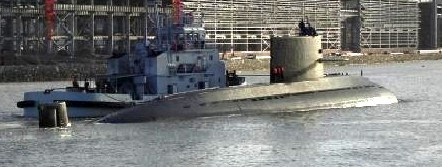The Chinese Tech advance is not waning any time soon. The latest news is that the nation is looking into unmanned navigation, particularly in submarines.
By the early 2020s, the world will see the first of China's 'smart' subs or low-cost, unmanned submarines. These can move through the world's seas, according to SCMP, and they have unlimited applications. From underwater recon to placing mines, they can do any kind of job; they can even be used as deterrents against opposing subs in a military application.
Some researchers are delving deeper into the military use for these subs. Most of them are thinking of pitting these unmanned submarines against established powers, like the US.
That may be another goal that these underwater drones can be used for; for now, however, science benefits from the creation of these unmanned submarines.
Popular Science reports that these subs are currently being used in experimental and theoretical situations. They will eventually be used in anti-submarine and underwater hazard operations, but for now, they are being used as oceanographic condition detectors and unmanned data collectors. The data that they collect range from the early earthquake and tsunami warnings to underwater research.
Early drafts of what could later become mass-production models include the Qianlong III and the Haiyan UUV. The Qianlong III, a predecessor of the Qianlong II and third in line to the Qianlong UUV line, is shaped like a clownfish, while the Haiyan UUV is designated as an 'underwater glider' and looks like a torpedo.
By 2021, the subs are expected to enter its initial maritime applications. These subs, as Daily Star UK points out, are part of the 912 project and is China's answer to the US' unmanned aerial drones.
The 912 project is a previously-classified Chinese program that aims to create a 'new generation' of underwater vehicles. It is being prepared for the 100th anniversary of the ruling Chinese Communist Party in 2021, and they might be better than manned subs for the sole purpose that they can be produced large or small-scale.
These, however, don't mean that they'll replace human intervention in the seas eventually. However, they can be assigned on missions where humans cannot go, like suicide or one-way trips.






